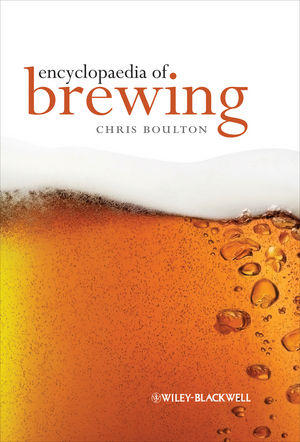Understanding the variables in waste reduction for beverage plants
Waste containment team crucial to zero-waste goals

All beverage operations throughout the supply chain create residuals or situations that can be classified as waste. Whether a result of initial raw materials processing or marketplace distribution, beverage waste is generated, to some extent, at work areas located in the three supply chain segments: processing, production and distribution.
Because waste is costly and generated across such a broad range of the beverage operation, “waste” needs to be clarified, or defined, before making any evaluation or analysis for containment and cost reduction.
Many sophisticated terms have been used to describe waste reduction efforts such as zero defects, recycling projects, zero waste, going green and many others. However, regardless of terms used and the efforts to reduce, the process generates waste — plain and simple.
For beverages, specific reference can be made to the following areas:
- raw materials (ingredients including water)
- finished product (formulated and enhanced)
- production (packaging, wrapping and casing)
- pre-distribution activity (storing, picking and loading)
- distribution operations (delivery and merchandising)
- supporting infrastructure (utilities and services)
This is where waste is produced, and what is done with, or to, waste becomes the main focus for analyzing the environment and determining the causes, so that appropriate actions can be taken for containment, cost reduction or elimination.
Ground work
Prior to outlining goals, approaches and expected results, having a positive philosophy and attitude toward the causes of waste are important factors for any containment effort. Therefore, even though many waste containment programs exist, it is best to organize a waste containment team (WCT) utilizing production, quality, finance and sales personnel who can collaborate on a realistic and basic philosophy with related achievement attitudes to help develop the waste containment project.
It also is prudent for the WCT to address the three supply chain segments as a basis for defining the goals, reviewing available approaches and projecting results, according to the operating environment presented in each segment.
It should be understood that overall beverage operations generally create two kinds of waste: process waste and operational waste.
Process waste is variable on an ongoing basis and particular to the process activity in each segment of the supply chain. Operational waste also is variable on an ongoing basis; however, it usually is created only when malfunctions occur with machinery, personnel or packaging materials.
Evaluation focus
The infrastructure in a beverage facility is a good starting point to begin waste evaluation. Water and sewer, electricity, gas, and other support entities can create waste through misapplied rates, usage schedules, supply sources, availability or competition. Ensuring that proper rates are available and utilized at nonpeak times can significantly prevent electrical power and gas waste.
When possible, alternative sources should be researched to obtain the lowest applicable rates and sustained reliable availability. Subsequent to rates and sourcing is plant usage, such as operating methods and procedures. The best rates and reliable availability are negated if internal best-practice operations are not followed for all utilities.
Process water and waste water also continue to be major waste issues in beverage production facilities. Metered process water, treated in most plants, is the content in the product. However, percent usage issues can make metered water waste a priority item. Waste water handling, rather than sewer disposal, can be recycled by filtering and then reusing for plant jobs that do not require treated water.
The focus on raw materials is subject to ongoing inherent process waste. Although computerized measuring devices are used for most solid and liquid materials, almost all beverage processing is subject to loss (waste), often referred to as yield. Solid-ingredient waste might not occur as readily as liquid waste. However, any product not containerized still becomes waste. Containment in this area is difficult but controllable.
The packaging materials focus not only is ongoing, but exemplifies the operational waste category. Packaging materials — from containers to multi-container wraps — are subjected to machinery and personnel activities that can, and do, create waste. Malfunctioning operating practices, either by personnel, machinery or off-spec material, are major causes of packaging-material waste. However, after packaged on the line, finished salable product is subjected to additional waste possibilities throughout the warehouse/distribution activities. The environment makes containment difficult, requires trained personnel, makes maintenance mandatory and represents a high-cost waste area.
Although containing waste in beverage plants will be a continuing challenge, an approach needs to be taken with basic goals defined for each of the beverage categories. The actual operating conditions might vary, but establishing and maintaining a waste awareness environment among management and staff, utilizing recycling techniques, setting waste standards and eliminating operating practices conducive to waste creation can provide an aggressive, practical and attainable cost-oriented waste containment program.
Looking for a reprint of this article?
From high-res PDFs to custom plaques, order your copy today!







